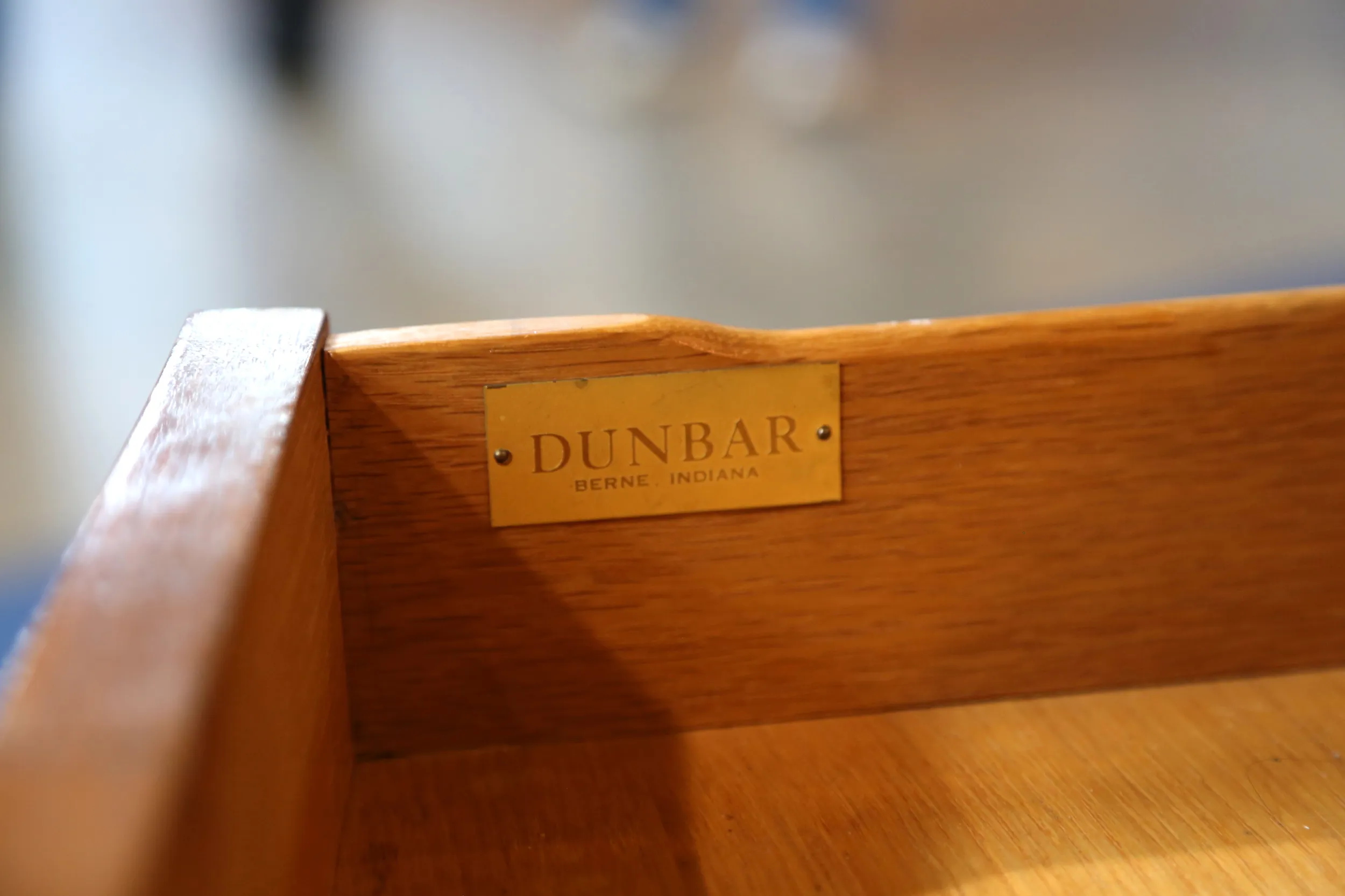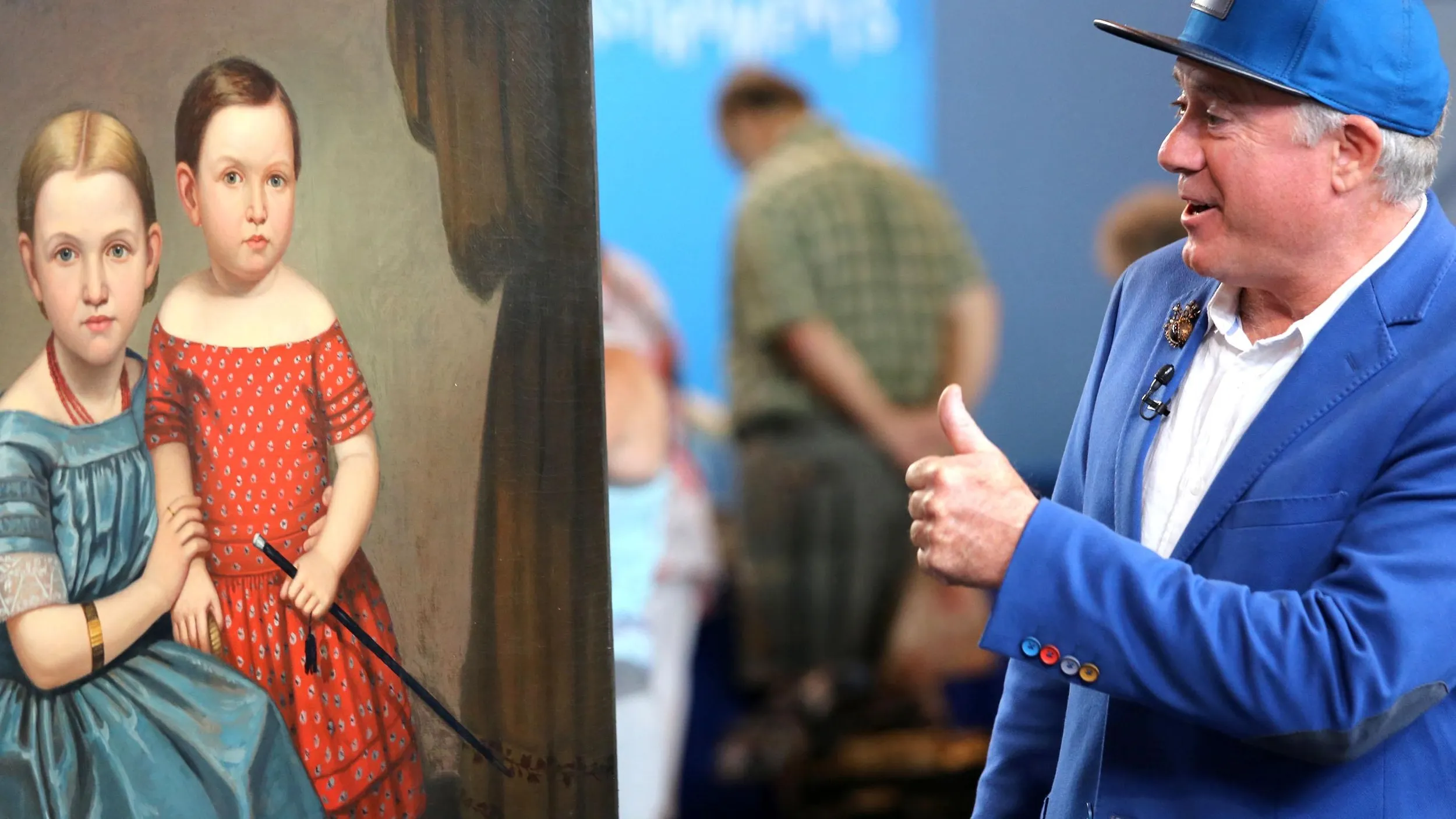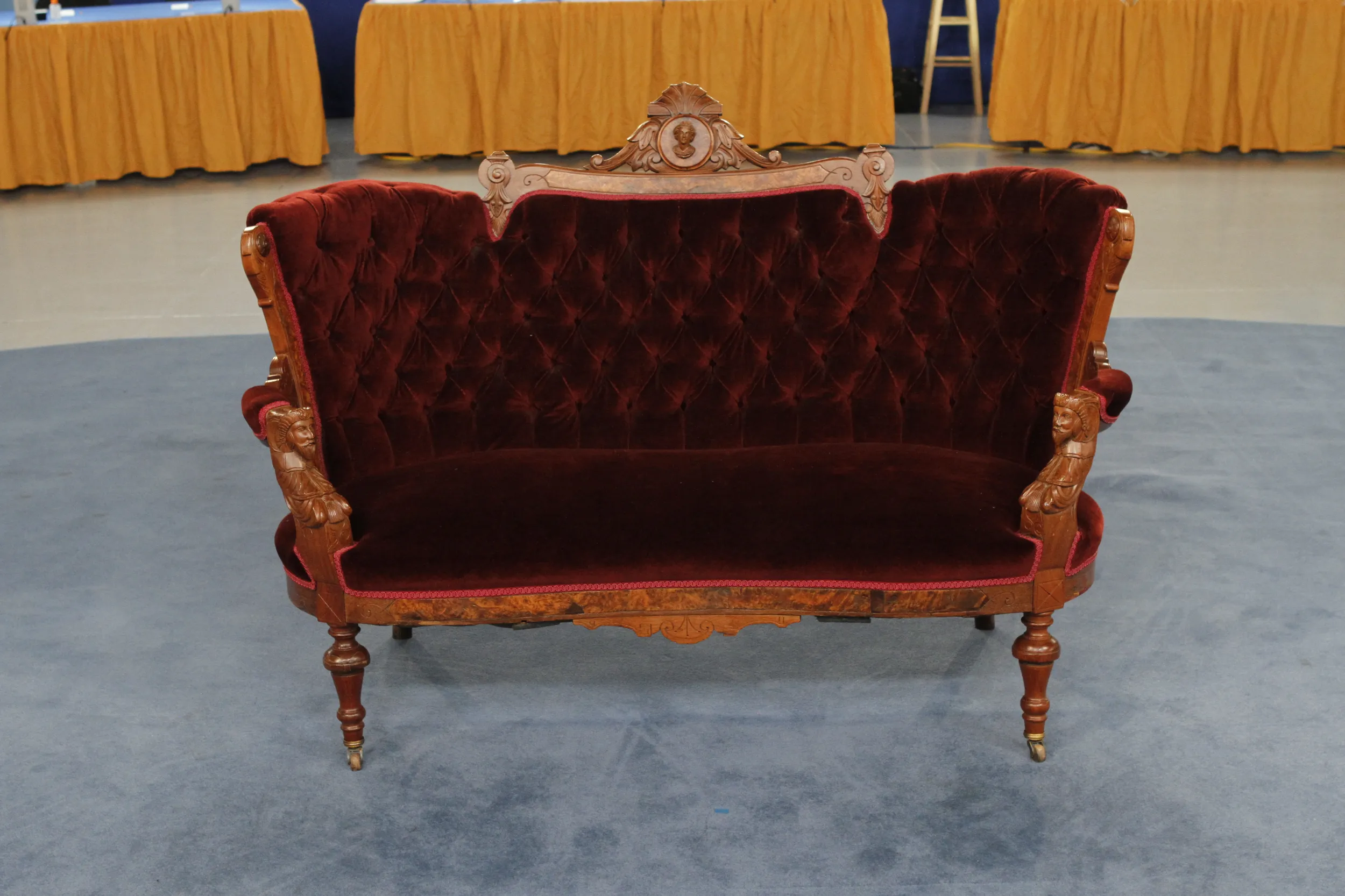GUEST: I brought my parents' rolling beverage cart. They moved into our home in Cleveland, Ohio, in the early '50s, and Mom and Dad's decorator took them to Chicago to the Dunbar showroom, where they picked out a number of Dunbar pieces. This was their favorite piece, but it was very, very, expensive. So although they bought other pieces, they reluctantly left this one behind. And when they got back to Cleveland, their decorator was able to get them a discount, and it's been in my family's living room ever since.
APPRAISER: Well, you're right, it's by Edward Wormley for Dunbar. And he was a furniture designer who studied at the Art Institute of Chicago. He went to work at Marshall Field's as an interior designer, in Chicago. And then he met the president of Dunbar Furniture Company, who then hired him to sort of upgrade their furniture line. It actually has the Dunbar tag, it's a brass plaque in here. Dunbar's based out of Berne, Indiana. And, you're right, it's a beverage cart, it's made out of walnut, it's got cedar, and this up here is laminate. And it's something that they would have used for entertaining. Dunbar was known for making quality furniture. There were other makers. When one came out with something, then, like, Herman Miller, Noel, someone else would come out with one almost identical. But it's a great design, you haven't had it refinished or anything like that.
GUEST: No.
APPRAISER: And so you obviously probably know how it works?
GUEST: Yes, I do.
APPRAISER: So it has this leaf that swings up and then slides over. Then it's got storage in the front and then some storage over here, and you have the perfect place to mix drinks for a party.
GUEST: The perfect place to have cocktails.
APPRAISER: People collect cocktail shakers, the artisan drinks, everyone's a mixologist these days, and this is the perfect size for an apartment, and it's a perfect size for a dining room. It's great for entertaining, because it's not going to take up a ton of room. So do you know how much your parents paid for it in the 1950s?
GUEST: I do not, but I know that it was very expensive, and that's why they didn't originally purchase it the day...
APPRAISER: That they waited?
GUEST: Yes.
APPRAISER: Okay, so, it was designed in 1954. Dunbar was top of the line, and when your parents purchased this, they probably paid around $375 for it—
GUEST: Really?
APPRAISER: in the '50s, which was a lot of money back then. There were other manufacturers that made similar items, and they were lower priced, probably in the $175, $200 range. In a good, modern auction, it would probably be estimated in a $3,000 to $5,000 range. It could probably bring at the upper end of that, because it's so popular right now. For insurance-- you might want to insure it, because that's retail replacement at around probably $10,000.
GUEST: $10,000.
APPRAISER: Yeah.
GUEST: Well, I will soon be moving it into my new St. Louis home.
APPRAISER: Oh, nice.
GUEST: And I can't wait to welcome my new St. Louis friends-
APPRAISER: This is perfect.
GUEST: -and make them cocktails on my mother's bar.
APPRAISER: Perfect.
GUEST: This was the biggest surprise of my life. I knew it was special. I didn't ever think that it would be on "ANTIQUES ROADSHOW." I mean, how cool was that?











